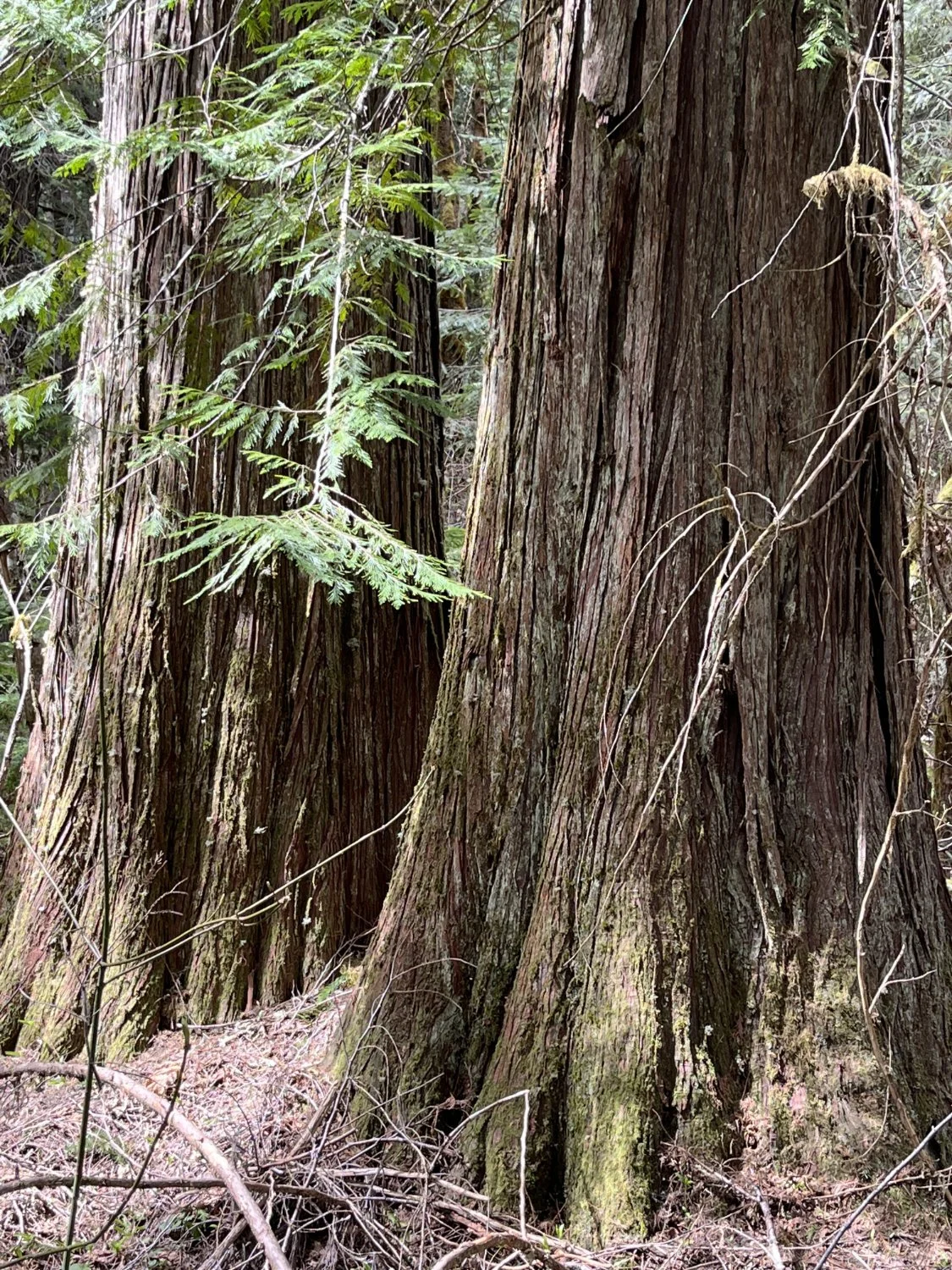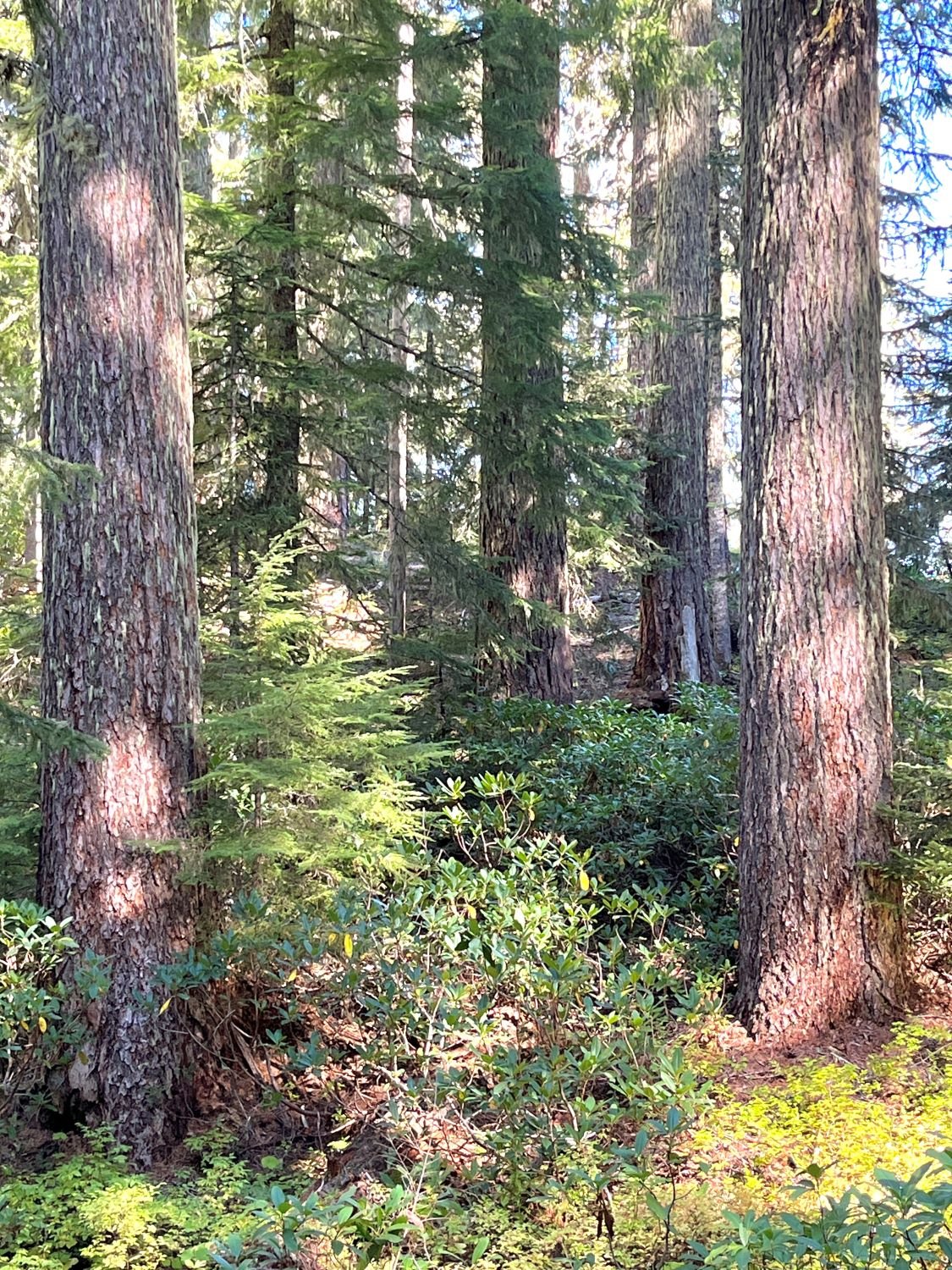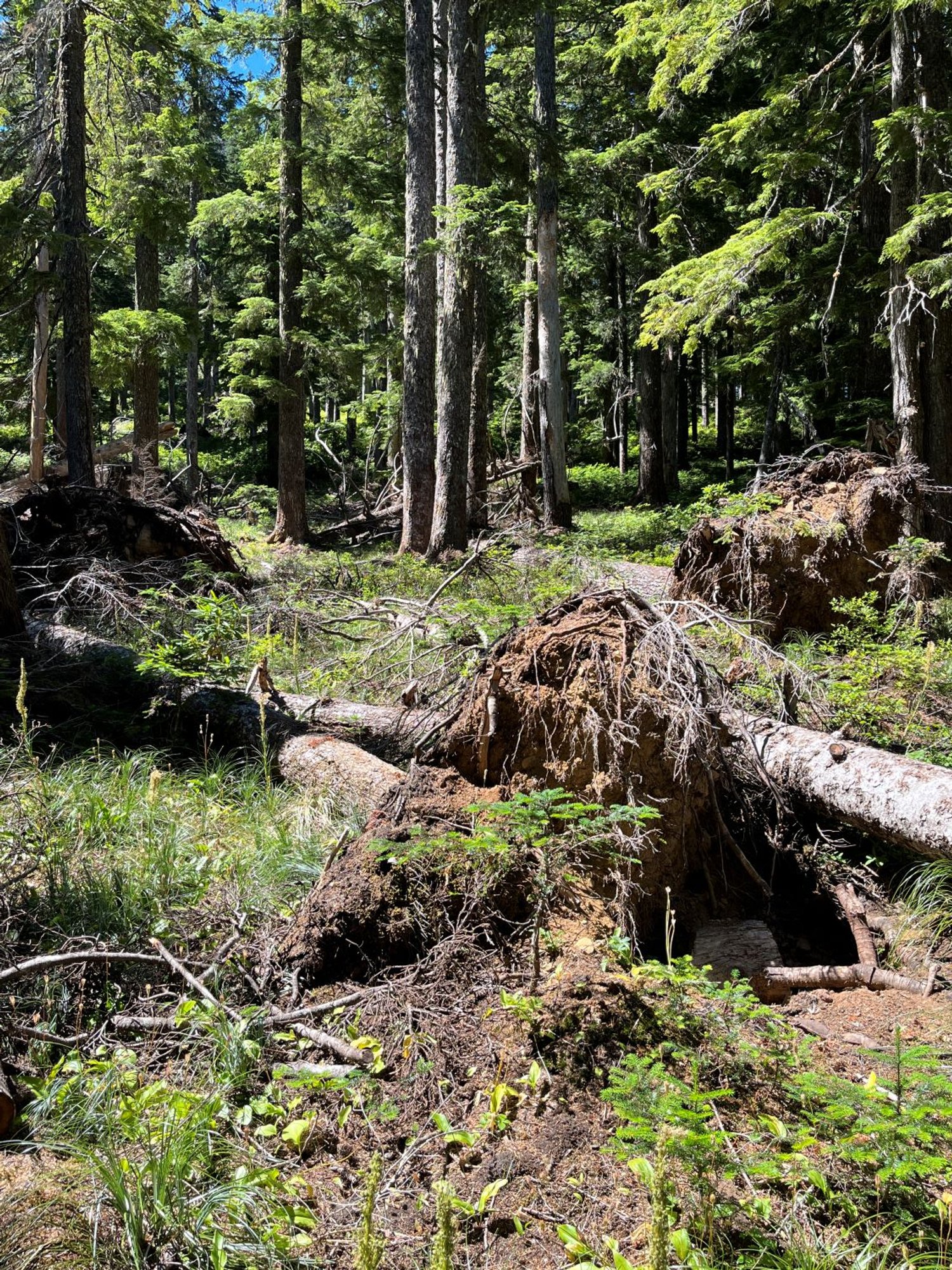
Ecology
Images of enormous Douglas-fir and western redcedar in lush, verdant forest are iconic in the Pacific Northwest. Yet the old forests that hikers actually see are quite variable, reflecting a wide range of environmental conditions and processes. The amount of sunlight, heat, and moisture available to a tree differs greatly, as does a tree's ability to tolerate high or low levels of each.
Trees and other plants need sunlight to create food through photosynthesis, and species differ in their tolerance of low light conditions. Shade cast by an upper canopy of trees is the most significant factor affecting the availability of sunlight to other plants. Differing shade tolerance among tree species has a strong effect on which species are present and the relative abundance of each species in very old forests. Theoretically, over the long term, tree species that can regenerate and grow in shade, such as western hemlock and Pacific silver fir, will eventually move into the upper canopy and dominate the forest.
Species also differ in their ability to withstand temperature extremes, particularly in the early stages of forest establishment when tree seedlings struggle to root themselves and out-compete surrounding plants. Cold and snowpack-tolerance directly affect which tree species can colonize a site at higher elevations in the Cascades where heavy and persistent snow is the rule. Changes in the tree species present due to changes in elevation and latitude follow predictable patterns. For example, Douglas-fir seedlings do not tolerate deep snowpacks; consequently, Douglas-fir is rare at high elevations.
The amount of water available to tree roots through the soil strongly influences the growth of trees. Too little moisture, and trees dial down basic life-maintenance functions; too much moisture reduces the availability of oxygen in the soil for vital physiological processes. Soils vary widely in their moisture-holding capacity based on exposure to the sun, soil depth, rock content, and many other factors. Some tree species are better able to tolerate either high (e.g., western redcedar) or low (e.g., ponderosa pine) levels of moisture in the soil, giving them a competitive advantage over other species on those soils.
These environmental factors set the stage for the cast of conifers likely to occupy a site. The tree species present often change over time though, as a forest grows and develops in a process called "forest succession." Commonly, tree species most capable of establishing a new forest when there is ample sunlight following a forest disturbance do not regenerate or compete as well in a shady environment, e.g., Douglas -fir. Consequently, shade-tolerant species tend to become more abundant as succession progresses. Succession can also refer to changes in forest structure over time as big trees and snags develop, and the forest canopy becomes more complex.
Over the very long term, 600 to 800 years or more, forest succession can lead to a condition known as a "climax" forest. Theoretically, if enough time passes without major disturbance, such as fire, only shade-tolerant trees survive and regenerate, creating a forest with trees of only shade-tolerant species of all ages. In reality such theoretical conditions rarely exist in the Oregon Cascades. Fires have historically occurred often enough to reset the forest prior to development of a climax forest.
Variability in environmental conditions and slow changes over time through ecological succession produce diverse forests across the landscape. However, sudden change through forest disturbances such as fires and floods, often create new patterns and reset ecological succession. Some disturbances operate over large landscapes, such as fire or occasional volcanic eruptions, while many disturbances, such as isolated blowdown or landslides, function as finer-scale punctuation marks overlaid on the broad landscape pattern.
In the last century industrial logging, a relatively new and alien form of disturbance, has greatly affected vast portions of the Cascade Range. Unfortunately, most past logging was both very severe (clearcutting) and very frequent (short rotations), especially on private lands where old growth has essentially been liquidated. Millions of acres of old growth have also been felled or fragmented by clearcutting on federal forest lands following World War II, though this practice was abruptly halted in the 1990s and has largely ended.

Western redcedar - icons of the Northwest

Douglas-fir over shade-tolerant hemlock

Abundant light in canopy gap

Giant, cold-hardy Alaska yellow cedar

Dry-site ponderosa pine

Old western redcedar on floodplain

Cedar Creek Fire (2022)

Blowdown

Private land clearcuts (2022)